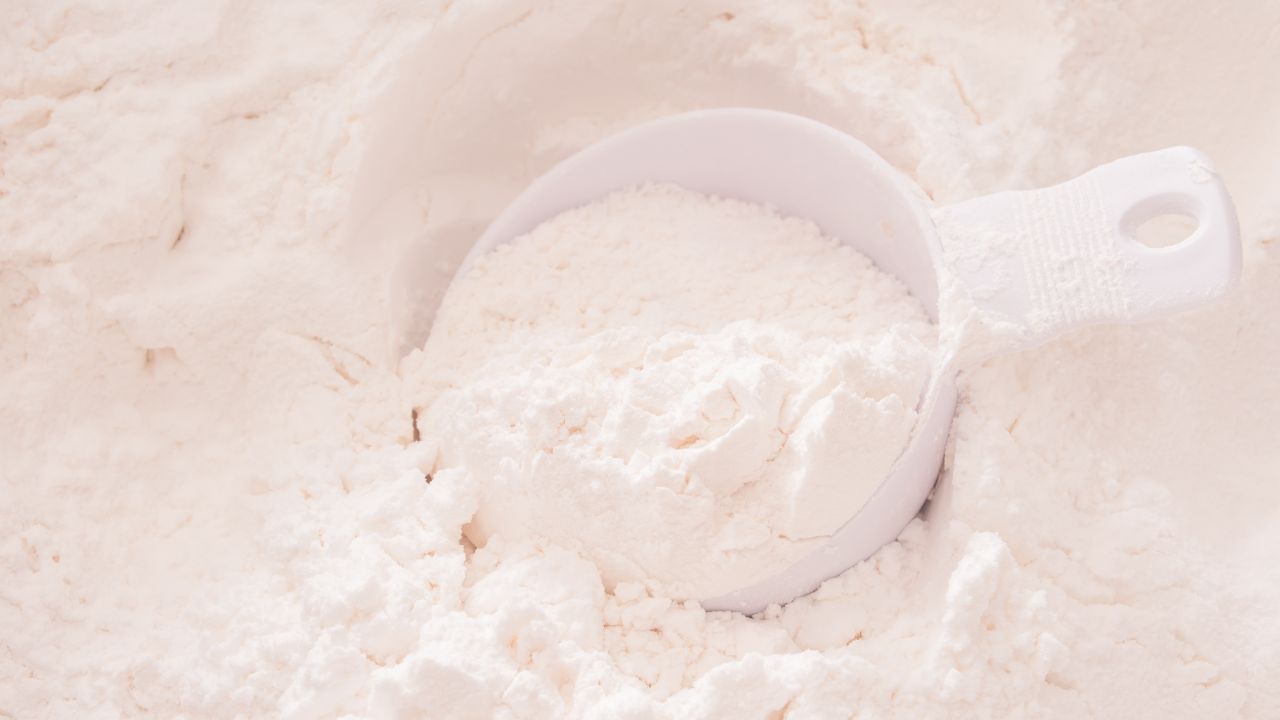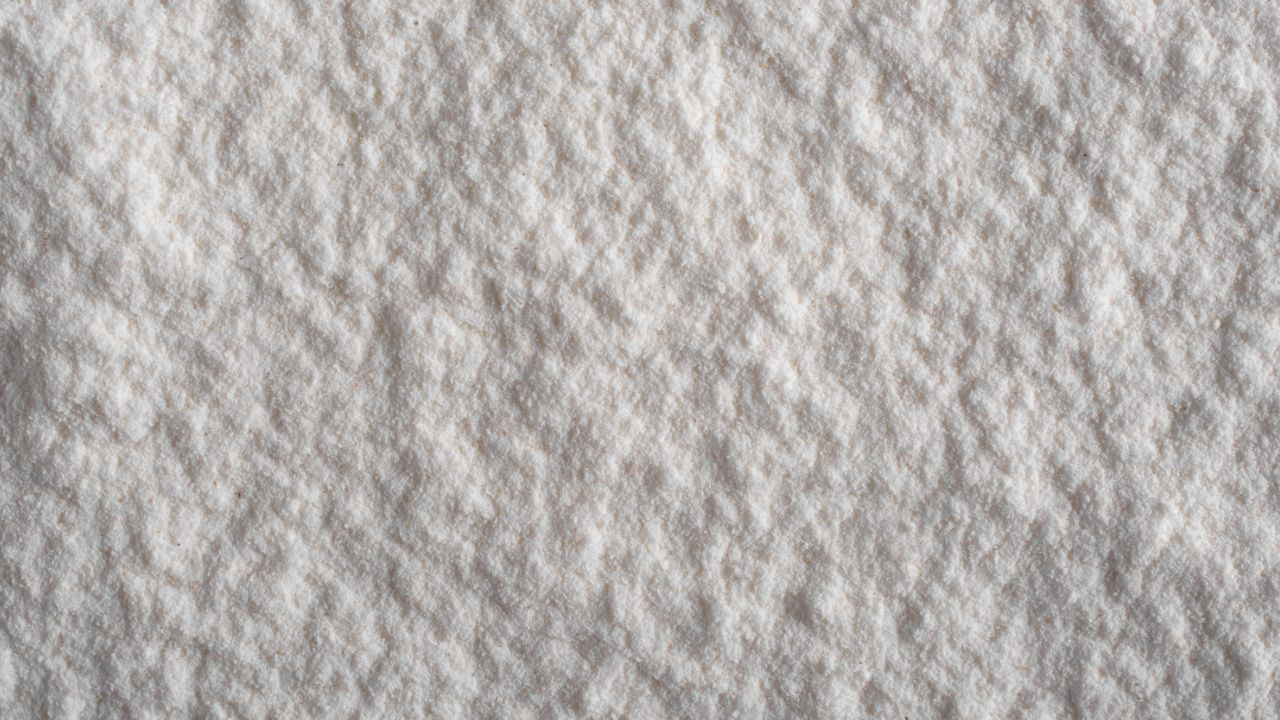If you like to dabble in a bit of baking here and there, you’re probably no stranger to flour. It’s used in pretty much any baked good.
Of course, some recipes will call for all-purpose flour while others will require self-rising flour.
If you’re all ready to get baking, and then after scouring high and low in the pantry for your ingredients you realize that you’ve got the wrong flour, you may be wondering if you can use it.

What difference does it really make? You may wonder. It can’t make that much of a difference, right? Flour is flour. Well, not exactly.
There are two different kinds of flour for a reason, and each has its own specific purpose.
But don’t worry, by the time you finish reading this article, you’ll completely understand the exact differences between the flours.
And you’ll even know how to turn all-purpose flour into self-rising flour when you need it. So what are we waiting for? Let’s jump straight into it.
What Is All-Purpose Flour?
As the name suggests, all-purpose flour is pretty versatile. It’s the flour that you’ll most commonly use in most recipes.
From sweet to savory, it’s a pretty key ingredient in thousands of different meals and desserts.
When hard and soft wheat are milled together you create flour. And since it is basically created from entirely wheat it is therefore considered a wheat product.
However, this classification might be slightly loose considering it has pretty much no fiber in it whatsoever.
This happens because the flour goes through a pretty rigorous refinement process.
And during this process, you lose a lot of the good stuff that is contained in the wheat.
After refinement, you can say goodbye to the germ, bran, healthy fats, antioxidants, and phytochemicals.
All that is really left by the end of this process is the endosperm and this basically has no nutritional value.
Don’t worry though, after the refinement process, the flour is then enriched with other nutrients such as iron, niacin, riboflavin, and thiamine to bulk its nutritional value back up.
So now it does have nutritional value again, and thanks to the refinement process, it also now has an extended shelf life.
If you store All-Purpose flour in your cupboards, it should keep for as long as 8 months.
Pop it into the refrigerator and you extend the life to one year, move it to the freezer and it has a huge two-year shelf life.
What Is Self-Rising Flour?
Self-Rising flour is a little different from All-Purpose flour. All-purpose flour has around 10-12% of protein content whereas Self-Rising flour has only 8%.
Much like All-Purpose flour, Self-Rising flour has enriched nutrients added to it. However, it also has the ingredients baking powder and salt added to it.
These two ingredients are very important to the makeup of Self-Rising flour as they are what makes the flour the ability to self-rise.
So whenever you use self-rising flour you can expect whatever pastry, cake, or the like, to rise.
And that will happen regardless of whether you’ve added yeast, baking powder, or baking soda to your recipe.
Because of this feature, you can’t really substitute Self-Rising flour with a different kind of flour in your recipes.
You’ll also notice that Self-Rising flour will not last quite as long as All-Purpose flour will.
This is because this type of flour has a leavening agent that All-Purpose flour does not.
You can expect Self-Rising flour to last anywhere between four and six months.
Much longer, and you’ll find that your baked goods won’t rise because the baking powder has lost its potency.
What Is All-Purpose Flour Used For?
As the name suggests, All-Purpose flour can be used for pretty much anything.
If a recipe requires flour, is pretty likely that All-Purpose flour will do the job.
When it comes to scrumptious desserts such as cookies, muffins, brownies, and the like, All-Purpose flour will be a great choice.
If you need your pastry to rise a little you can add a teaspoon of either baking powder or soda and it’ll do the trick.
But All-Purpose flour isn’t just for baking, oh no, it can be used in many savory dishes too. And it can be the solution when things go a little wrong.
If you make a casserole or gravy and it’s all thin and watery, All-Purpose flour will come to the rescue.
Mix a tablespoon of flour to some water and then add it to the mix, and boom, instantly thick casserole/gravy.
If you fancy something deep-fried then you’ll also want to smother it in all-purpose flour.
What Is Self-Rising Flour Used For?

If you’re a fan of super tasty baked desserts, self-rising flour will be the best friend you never want to lose.
It’s great for cakes of pretty much all kinds, muffins, cupcakes, cornbread – you name it, it’s probably in the recipe.
You won’t need to worry about rising agents such as baking powder or soda when you’re using Self-Rising flour, as it will do all the work for you.
Nice and easy.
The possibilities of what you can make with self-rising flour are endless, from fluffy delicious pancakes to devourable pizza dough to scrumptious biscuits.
If you have no All-Purpose flour you may swap it for Self-Rising, but you’ll want to be careful because your baked goods will lift somewhat if you do.
If a recipe calls for All-purpose flour and rising agents, then you can use Self-Rising flour and leave these rising agents out.
However, this does not include baking soda. If your recipe directs you to use baking soda, you will still need to add that.
How To Make Self-Rising Flour Out Of All-Purpose Flour?
The good news is that if you’ve scoured the pantry for Self-Rising flour and only found All-Purpose flour, providing you have a few other ingredients, you can actually turn All-Purpose flour into Self-rising.
So there won’t be any need for an extra trip to the store. All you’ll need is two fairly common ingredients; salt and baking powder.
The only real drawback that you’ll have is that self-rising flour tends to be lower in protein than All-Purpose, so if you do it this way it might not be quite as tender.
But other than that, you won’t be able to tell the difference. And it really is so simple to do.
All you have to do is add a teaspoon of baking powder and a ¼ teaspoon of salt to each cup of flour and mix.
And just like that you have Self-Rising flour. However, it is really important that you get those measurements exactly or it might not work.
Frequently Asked Questions
What Happens If You Add Yeast To Self-Rising Flour?
If you are baking bread and you use self-rising flour and yeast, you’ll find that your bread will over-proof and thus collapse while baking.
How Do You Test If Self-Rising Flour Is Still Good?
There are a few things you’ll want to check for to see if your self-rising flour is still good to use.
Noticing mold is the first and most obvious identifier that your flour has gone bad. If it has a sour or rancid smell then it also needs going in the trash.
Also upon close inspection you may notice pantry bugs, pests, or larvae in your flour. Obviously, if you see these you will not want to use it.
Do I Still Need Baking Soda If I Use Self-Rising Flour?
Self-rising flour does not contain baking soda within it.
If your recipe calls for baking soda you will still need to add it regardless of which kind of flour you use.
How Much Water Can All Purpose Flour Absorb?
Flours are often tested for absorption since each type of flour will absorb different amounts of water.
This means that different types of flour will make doughs of different consistencies.
All-Purpose flour tends to have a water absorption rate of around 55-65%
How Long Will Flour Last In Mason Jars?
If you store flour in an airtight container you can keep your flour fresh for as long as 10 months.
Not only this but it will keep those annoying pesky pests such as flour bugs at bay.
If you have the tools to vacuum seal your flour, it can actually last for as long as two whole years.
Final Thoughts
Hopefully, after reading this article, you now have a much better understanding of the differences between All-Purpose flour and Self-Rising flour.
You should know when and why you’d use each type of flour and how to add just two ingredients to your All-Purpose to turn it into Self-Rising.
So whatever baked or savory good that you create next, you should have an extended knowledge of the flour that you are using. Happy baking – enjoy!
- 15 Traditional Greek Breads - July 31, 2023
- 30 Delicious And Gluten-Free Cookie Recipes - July 29, 2023
- 30 Of The Best European Desserts - July 29, 2023
